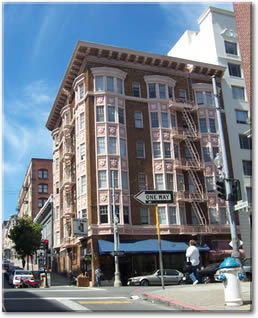
| Are Courts Biased? |
|
|||
|
On
October 24, 2005 a D.V. defendant who had 8 felony D.V. convictions
was arrested for murdering his ex-girlfriend and stuffing her body
in the trunk of his Honda Civic. He had just been released from
the S.F. jail the week before and was under a court order to attend
a 52-week D.V. program, having been in D.V. court since December,
2001. In 2004 a husband was arrested in San Francisco for murdering
his wife. At the time he slit her throat he was a model participant
in his domestic violence classes. In 2000 a San Francisco woman
was stabbed to death in her Richmond District apartment by her ex-boyfriend
in front of her two children. She had made two police reports against
him before the killing. Alcohol and drugs are often involved in
domestic violence incidents. Many defendants have mental health
issues such as anger and depression. The court tries to change defendants’
behavior and that is a tough job. Judges want to enforce the laws and bring criminals to justice. That places them firmly on the side of the prosecution. The domestic violence court can seem more biased than most because it is a behavior modification department and the judges there tend to be involved in the cases. When the court first opened in Department 18 the judges allowed posters depicting battered women and children to be put on the courtroom walls. The probation department has a desk in the courtroom and encourages the judge to take a harsh line against domestic violence probationers. Prosecutors persistently state that women accused of being batterers really are offenders, even after they are forced to dismiss the case for lack of evidence. A prosecutor believes that the case a defendant was arrested on is only the tip of the iceberg. They will insist a person is guilty after one of their own domestic violence experts writes a report saying that the woman is the true victim. However the D.A. dismisses some cases and greatly reduces the charges in others. Once a defendant is convicted and placed on probation he or she can be jailed by a judge for minor acts of wrongdoing. The state provides special funding for prosecuting these cases. In San Francisco all domestic violence cases are prosecuted in a special court, Department 13, by a special unit of the district attorney’s office. The police have a separate investigation unit set up for domestic violence. The district attorney has an office of social workers that talks to victims and encourages them to cooperate with the prosecution. Prosecutors often use domestic violence experts to testify about patterns of domestic abuse. Men are victims too. Male on female violence gets all the publicity. Male victims are stigmatized and ignored. According to a study by the Centers for Disease Control, “approximately 1.5 million women and 834,732 men are raped and/or physically assaulted by an intimate partner annually in the United States.” This figure means at least 36 percent of the victims of domestic violence are men (ncjrs.org). California State University maintains an online bibliography of over 174 studies showing “women are as physically aggressive, or more aggressive, than men in their relationships with their spouses or male partners” at csulb.edu. One of the studies is the most comprehensive analysis of existing research on the topic ever published (Archer, Psych. Bulletin, 11/00), which found that 38 percent of injured victims are men and that self-defense does not explain the female violence. A report by the California Research Bureau shows that thousands of men seek shelter-based services every year. Health & Safety Code section 124250 excludes them from services, including motel vouchers and court advocacy, because of their gender. Related to court bias is the bail issue. Why should a person or their family have to post bail at the felony level when the victim’s injuries are minor and the case is going to be charged as a misdemeanor? Why do judges order defendants who haven’t posted bail to participate in batterer’s counseling before they have been convicted of domestic violence? Why is a defendant who cannot afford to post bail required to stay in jail right up to the day of trial and sometimes beyond that on a marginal case?
|
||||
|
|
||||
|
|
||||
|
Site Design Copyright © 2005 Willa Madden. All rights reserved. |
||||
